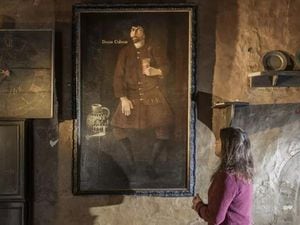Shropshire sky at night - February
Rumour has it that the 11th brightest star in the sky is about to go supernova.

Betelgeuse, 20 times the mass of our Sun, is approximately 8.5 million years old, 640 light years away and can be found in the constellation of Orion. It is a red supergiant and is in the latter stages of its life cycle which means it is running out of hydrogen. It has been pulsating, getting brighter and dimmer, for a number years but because it has dimmed to its lowest ever level speculation is that it is about to explode.
If correct it would be an awesome sight providing an object as bright as a full moon during the day. Don't wait up though – although not expected to last much longer it could take up to 100,000 years before exploding.
The countryside charity, the Campaign to Protect Rural England, is working with the Astronomical Associations' Commission for Dark Skies (CfDS) to monitor and combat increasing light pollution through its annual survey.
To participate all you need to do is venture outside during the last two weeks of February and count the number stars that you can see, with the naked eye, within the four main stars of Orion. Do not count the four corner stars Betelgeuse, Bellatrix, Rigel and Saiph but you do include the stars that make up his belt and sword. Then just submit your data online by visiting cpre.org.uk/starcount. The results will be released later in the year.
The full moon on the 9th is referred to as the 'Full Snow Moon' by the native American tribes and is the first of four supermoons due in 2020.
The Moon is at its closest approach to the Earth and might look slightly larger than normal. The 24th sees the moon on the same side of the Earth as the Sun, hence will not be visible. However the new moon offers the opportunity to search for dimmer objects in the sky.
Mercury and Venus grace our evening skies this month. With the innermost planet, Mercury, at its greatest distance from the Sun we have an excellent opportunity to view this hard-to-pin down planet. It follows the setting sun towards the horizon. Just do not search for it with binoculars until the sun has clearly set. For about four hours after sunset Venus will provide a magnificent sight in the western skies.
Although the gas giants of Jupiter and Saturn cannot be seen this month, a 10×50 pair of binoculars used to scan the constellation of Aries should reveal the ice giant Uranus. With a small telescope you should be able to see the green bluish disk of the planet.
The Shropshire Astronomical Society meets monthly on the second Saturday at Little Ness Village Hall and on the third Saturday at Rodington Village Hall and always welcomes experienced or novice stargazers. For further information visit www.shrophire-astro.uk
Steve Szwajkun is a member of Shropshire Astronomical Society





